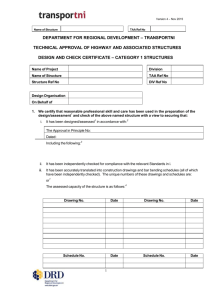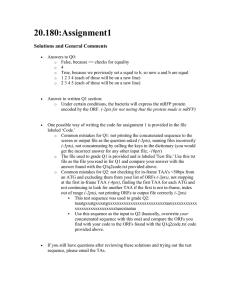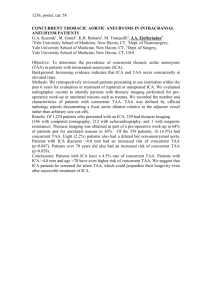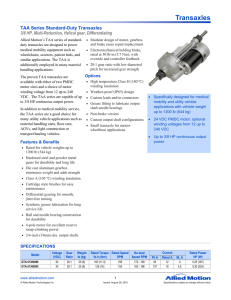A BLOOD TEST FOR THORACIC ANEURYSM
advertisement
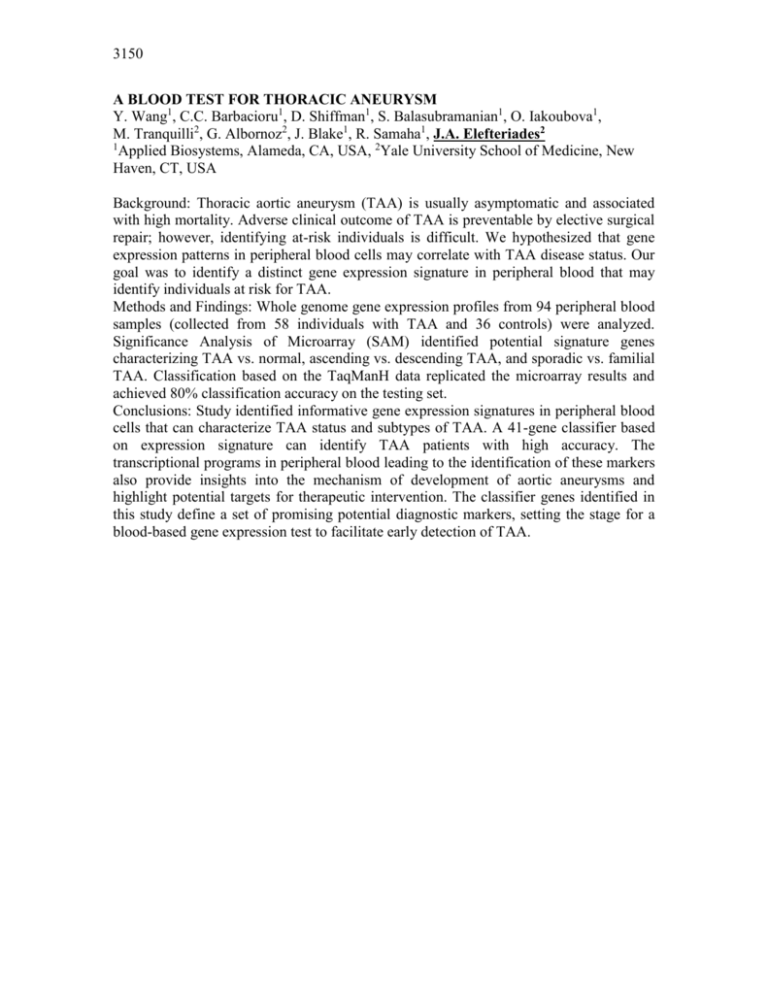
3150 A BLOOD TEST FOR THORACIC ANEURYSM Y. Wang1, C.C. Barbacioru1, D. Shiffman1, S. Balasubramanian1, O. Iakoubova1, M. Tranquilli2, G. Albornoz2, J. Blake1, R. Samaha1, J.A. Elefteriades2 1 Applied Biosystems, Alameda, CA, USA, 2Yale University School of Medicine, New Haven, CT, USA Background: Thoracic aortic aneurysm (TAA) is usually asymptomatic and associated with high mortality. Adverse clinical outcome of TAA is preventable by elective surgical repair; however, identifying at-risk individuals is difficult. We hypothesized that gene expression patterns in peripheral blood cells may correlate with TAA disease status. Our goal was to identify a distinct gene expression signature in peripheral blood that may identify individuals at risk for TAA. Methods and Findings: Whole genome gene expression profiles from 94 peripheral blood samples (collected from 58 individuals with TAA and 36 controls) were analyzed. Significance Analysis of Microarray (SAM) identified potential signature genes characterizing TAA vs. normal, ascending vs. descending TAA, and sporadic vs. familial TAA. Classification based on the TaqManH data replicated the microarray results and achieved 80% classification accuracy on the testing set. Conclusions: Study identified informative gene expression signatures in peripheral blood cells that can characterize TAA status and subtypes of TAA. A 41-gene classifier based on expression signature can identify TAA patients with high accuracy. The transcriptional programs in peripheral blood leading to the identification of these markers also provide insights into the mechanism of development of aortic aneurysms and highlight potential targets for therapeutic intervention. The classifier genes identified in this study define a set of promising potential diagnostic markers, setting the stage for a blood-based gene expression test to facilitate early detection of TAA.

